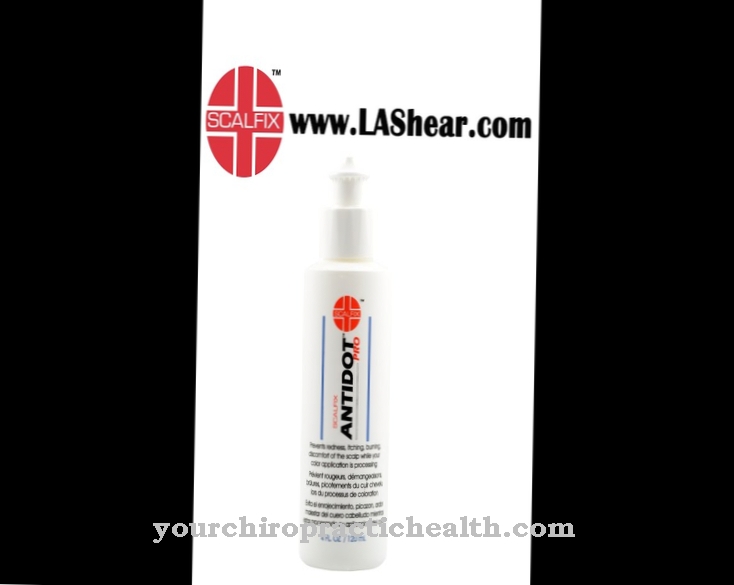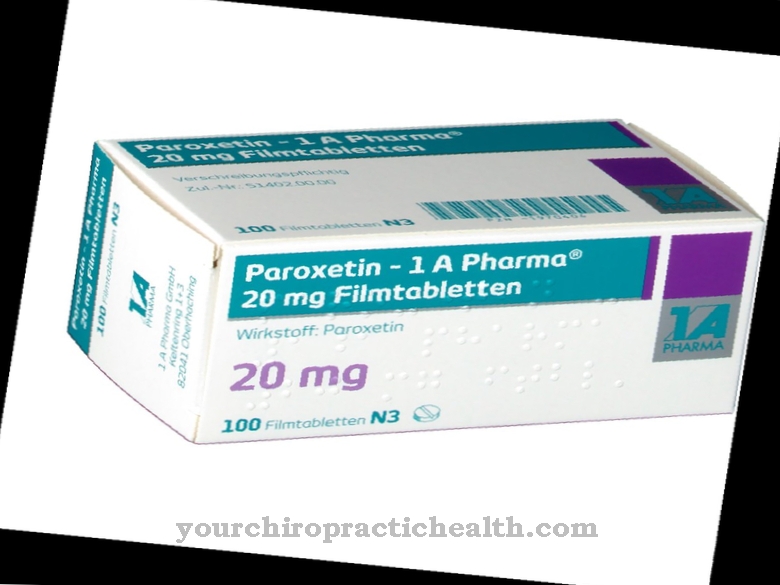As Ziconotide is called an analgesic. The remedy is used to treat severe chronic pain.
What is ziconotide?
![]()
The active ingredient ziconotide is understood to mean a polypeptide that is used as a pain reliever under the trade name Prialt®. The remedy originally comes from the venom of the sea snail Conus magus. However, medicine uses a synthetic replica of the natural substance.
Ziconotide was launched in 2001 for the treatment of rare diseases. The active ingredient has been approved in Europe under the name Prialt since 2005. In its early stages, ziconotide was viewed as a potential replacement for morphine. However, the drug has been under discussion since 2010 due to a higher risk of suicide, which relates to several individual cases.
Pharmacological effect
Ziconotide is not an opioid and does not interact with opiate receptors. The action of the amino acid peptide is based instead on the fact that it acts as an antagonist on calcium channels of the N-type, which are voltage-dependent. These occur in high density in special neuronal cells within the posterior horn of the spinal cord.
At these points, the NCCB channels, as they are also called, regulate the release of messenger substances that are involved in the processing of pain. By tying the calcium channels, ziconotide can slow the influx of calcium towards the nociceptive afferent nerves. Due to the blockage of the N-type calcium channels, the transmission of pain signals is finally interrupted. In addition, ziconotide has a neuroprotective effect.
From a chemical point of view, ziconotide is the omega-conopeptide MVIIA. It is a small protein molecule made up of 25 amino acids. The active ingredient is not suitable for ingestion in tablet form, as the digestive enzymes would break down the protein molecule in the gastrointestinal area. Ziconotide could therefore not even reach its destination in the spinal cord.
For this reason, the active ingredient is only supplied to the body by continuous infusion into the spinal canal. The agent is used as acetate via a mechanical pain pump. A combination of ziconotide and relaxants with a central effect, local anesthetics and opioids is also possible.
Medical application & use
Although ziconotide is a non-opioid pain reliever, it is suitable for treating severe chronic pain. However, the administration is limited to people who require intrathecal anesthesia. In this procedure, the pain reliever is administered directly into the spinal canal, which runs through several vertebrae.
In most cases, ziconotide therapy affects patients for whom opioid preparations are insufficient for treatment or are intolerant to them. In contrast to other non-opioid pain relievers, ziconotide is also suitable for treating severe pain.
Ziconotide is administered using an intrathecal catheter. It is important to store the drug at temperatures between 2 and 8 degrees Celsius, whereby it must not be exposed to sub-zero temperatures. In addition, the preparation must be protected from light.
The dose of ziconotide at the start of treatment is 2.4 µg per day. In the further course the dosage increases to the required level. The recommended maximum amount is 21.6 µg per day. In most cases a dose of 9.6 µg is considered sufficient.
You can find your medication here
➔ Medicines for painRisks & side effects
There are several side effects associated with taking ziconotide. Feelings of weakness, nausea, vomiting, gait disorders, blurred vision and confusion are particularly common. It is not uncommon for undesirable side effects such as loss of appetite, sleep problems, mood swings, nervousness, seeing double images, hearing noises, anxiety, thinking disorders, paranoia, urinary incontinence, urinary retention, muscle pain, water retention in body tissue, chest pain, feelings of the Cold, weight loss, difficulty breathing, profuse sweating, itching, low blood pressure, dry mouth, ringing in the ears, fever, and depression.
Other possible side effects, which occur rarely, however, are unconsciousness, difficulty walking, rashes on the skin, pain in the neck, back problems, increased body temperature, cramps, acute kidney failure or meningitis. Even a stroke and blood poisoning are possible.
It is believed that there is a link between taking ziconotide and attempting suicide. Therefore, a thorough examination of the doctor should be carried out in advance of treatment. Consistent monitoring by relatives is also recommended.
If the patient suffers from hypersensitivity to ziconotide, the active ingredient must not be used. A combination with chemotherapeutic agents should also not be used. These are cancer drugs and various antibiotics, provided that they are also administered via the spinal canal.
It is not recommended to use the product during pregnancy and breastfeeding. Although there are no human studies on the risks during this period, animal experiments have shown harmful effects on the offspring. The attending physician decides whether the use of ziconotide in children makes sense. There have been no corresponding studies to date.
The simultaneous use of ziconotide and certain other drugs can cause harmful interactions. For example, active ingredients such as the antihypertensive agent clonidine, the local anesthetic bupivacaine, the anesthetic propofol or the muscle-relaxing baclofen can cause drowsiness when administered together with ziconotide.
Caution should also be exercised if the pain reliever is combined with morphine. Even with low doses of ziconotide, severe side effects such as gait disorders, confusion and delusions were often found. In addition, the patients often suffered from poor appetite and vomiting.



























